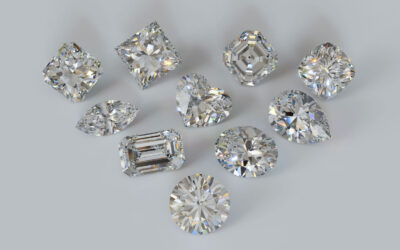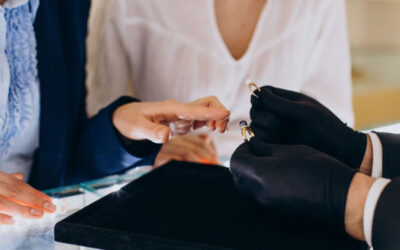Sterling silver never goes out of style. Whether it’s vintage flatware passed down through generations or a sleek, modern bracelet tucked away in your jewelry box, sterling silver carries both beauty and value. But if you’re considering selling your silver pieces, it’s important to know what to look for so you can get a fair and accurate offer.
At Accent Jewelers in Memphis, Tennessee, we’ve worked with thousands of customers looking to sell their silver. Here’s our expert guide to help you determine whether your pieces are truly sterling and what affects their value.
- Look for Hallmarks or Stamps
One of the easiest ways to identify sterling silver is by checking for stamps or hallmarks—tiny engravings that indicate the metal content. Most sterling silver items are stamped with:
- “925” – This means the piece is 92.5% pure silver, which is the industry standard for sterling silver.
- “Sterling” or “Sterling Silver” – Commonly found on older or American-made silver pieces.
- “S925” – Often used in sterling silver jewelry.
- Less common marks include “SS” or older versions like “Ster”.
Be sure to check discreet areas like the inside of rings, the back of pendants, the clasp of a bracelet or necklace or the edges of flatware. The mark may be small, but it’s often your first clue.
- Use a Magnet
Silver is not magnetic, so if your item is attracted to a strong magnet, it’s likely made from a different metal. While this test isn’t foolproof—some fakes use non-magnetic metals—it’s a quick and easy check.
A genuine sterling silver item should remain unaffected by a magnet. If it sticks? You might be looking at silver-plated or base metal.
- Rub with a White Cloth
Another simple test: gently rub your piece with a soft white cloth. Authentic sterling silver may leave a black mark behind due to natural oxidation, a reaction between silver and the air.
If nothing shows up, that doesn’t necessarily mean it’s fake—but if you see a greenish residue, it’s a sign your piece may contain base metals like copper or nickel, which are commonly used in silver-plated items.
- Consider the Weight & Feel
Silver is a dense metal and tends to feel solid and cool in the hand. If a piece feels unusually lightweight or hollow, especially if it’s a larger item, that could be a sign it’s plated or not sterling at all.
Trust your instincts—authentic sterling silver typically feels substantial, even in smaller jewelry items.
- Acid Testing (Leave It to the Pros)
An acid test can confirm the silver content by reacting with the metal to produce a specific color. However, this test can damage the item slightly, especially if it’s plated.
We recommend letting professionals—like our team at Accent Jewelers—handle this step using a jeweler’s testing kit or more advanced technology.
- Professional Appraisal or XRF Testing
If you’re working with antique silver, high-value items or heirlooms, a professional appraisal is always the best route. We also offer X-ray fluorescence (XRF) testing, a non-invasive way to confirm silver content without damaging the item.
At Accent Jewelers, we take the guesswork out of the process. Whether you’re selling a few silver spoons or a designer sterling necklace, our experienced buyers will evaluate each piece with care and transparency.
Ready to Sell Your Sterling Silver?
Bring your items to Accent Jewelers in Memphis for a complimentary evaluation. We offer competitive prices, honest evaluations and a no-pressure environment. Whether you’re decluttering, cashing in on a collection or simply curious about the value of your sterling silver, we’re here to help.
Visit us today or call to schedule your silver evaluation. Walk-ins are always welcome!






